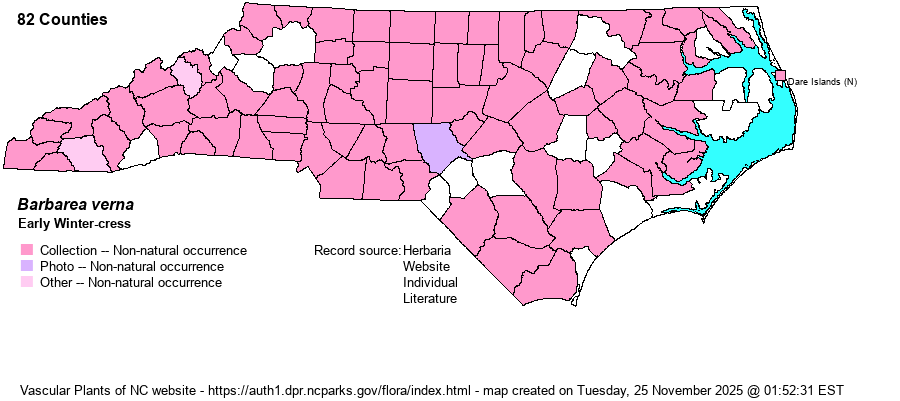| Author | (Miller) Ascherson | |
| Distribution | Throughout the state; probably in every county.
Native of Eurasia and Africa; in N.A. Newf. to MI and IL, south to GA and AR; also scattered in the West. | |
| Abundance | Generally common, except scarce in the Sandhills proper and rare on the Outer Banks (Nags Head Woods in Dare County). | |
| Habitat | Fields, meadows, cropfields, roadsides, pastures, farmyards, garden weed, yard weed, etc. | |
| Phenology | Flowering and fruiting March-June. | |
| Identification | This is one of two familiar bright yellow-flowered mustards of the spring season in weedy places. Early Winter-cress is a biennial from a basal rosette of pinnately dissected leaves, the lobes oblong or ovate. The stems grow 1-2.5 feet tall, with sessile or clasping leaves that are irregularly cut. The flowers are bright yellow, terminal and from leaf axils. The slender pods stand erect or are strongly ascending. The very similar B. vulgaris differs in having only 1-4 pairs of lateral lobes on the basal leaves versus 4-10 pairs of such lateral lobes on B. verna. | |
| Taxonomic Comments | | |
| Other Common Name(s) | | |
| State Rank | SE | |
| Global Rank | GNR | |
| State Status | | |
| US Status | | |
| USACE-agcp | | |
| USACE-emp | | |

